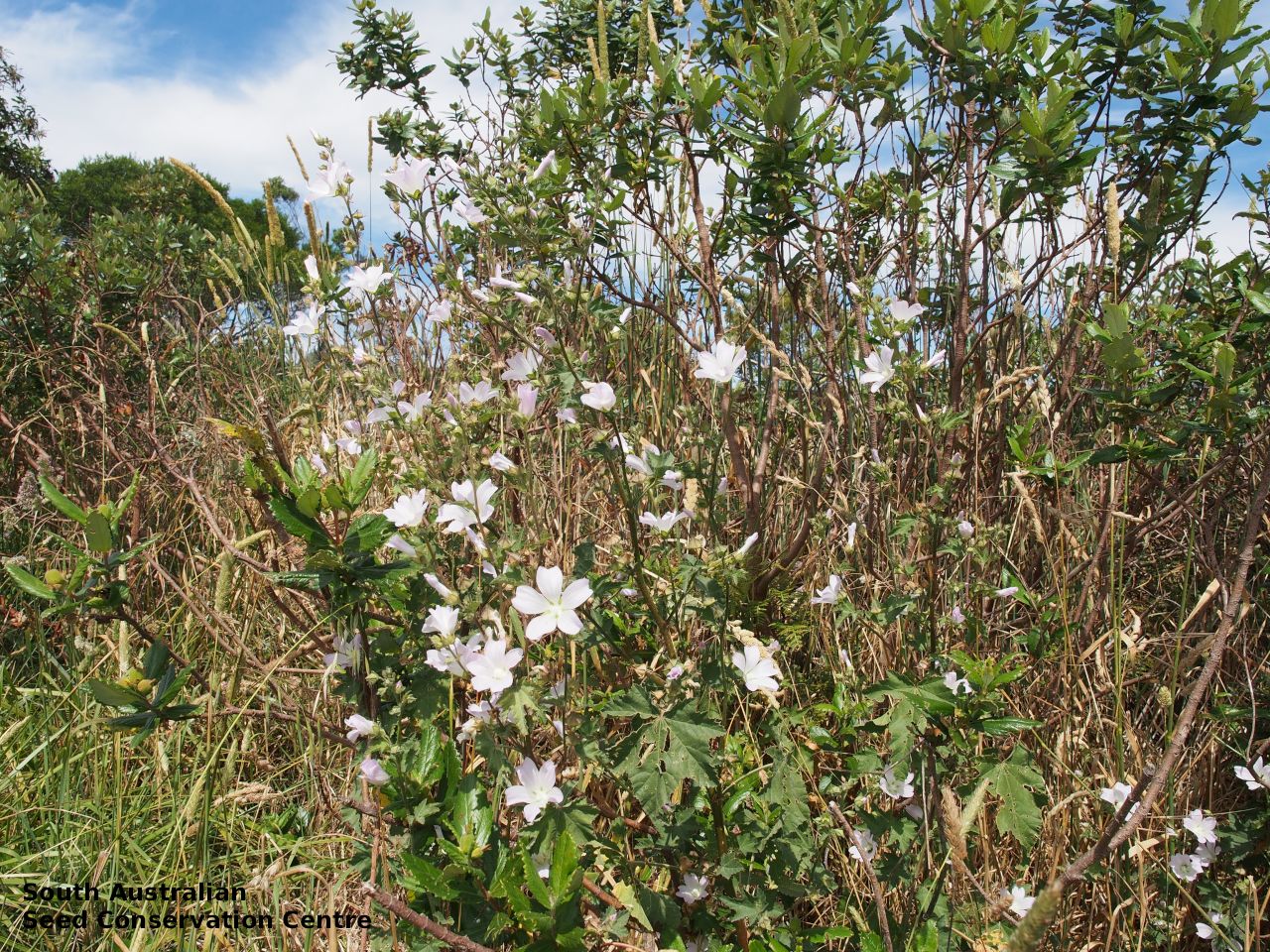
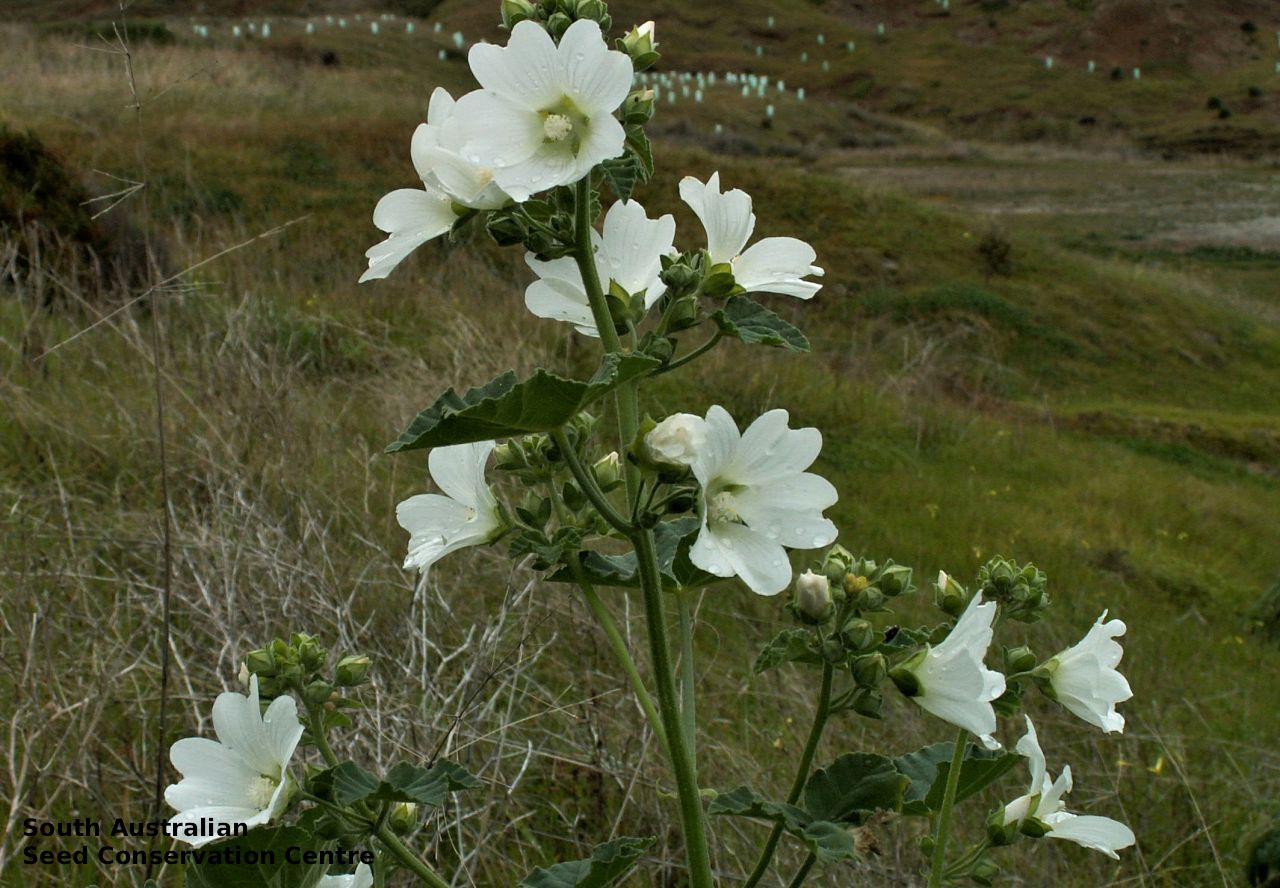
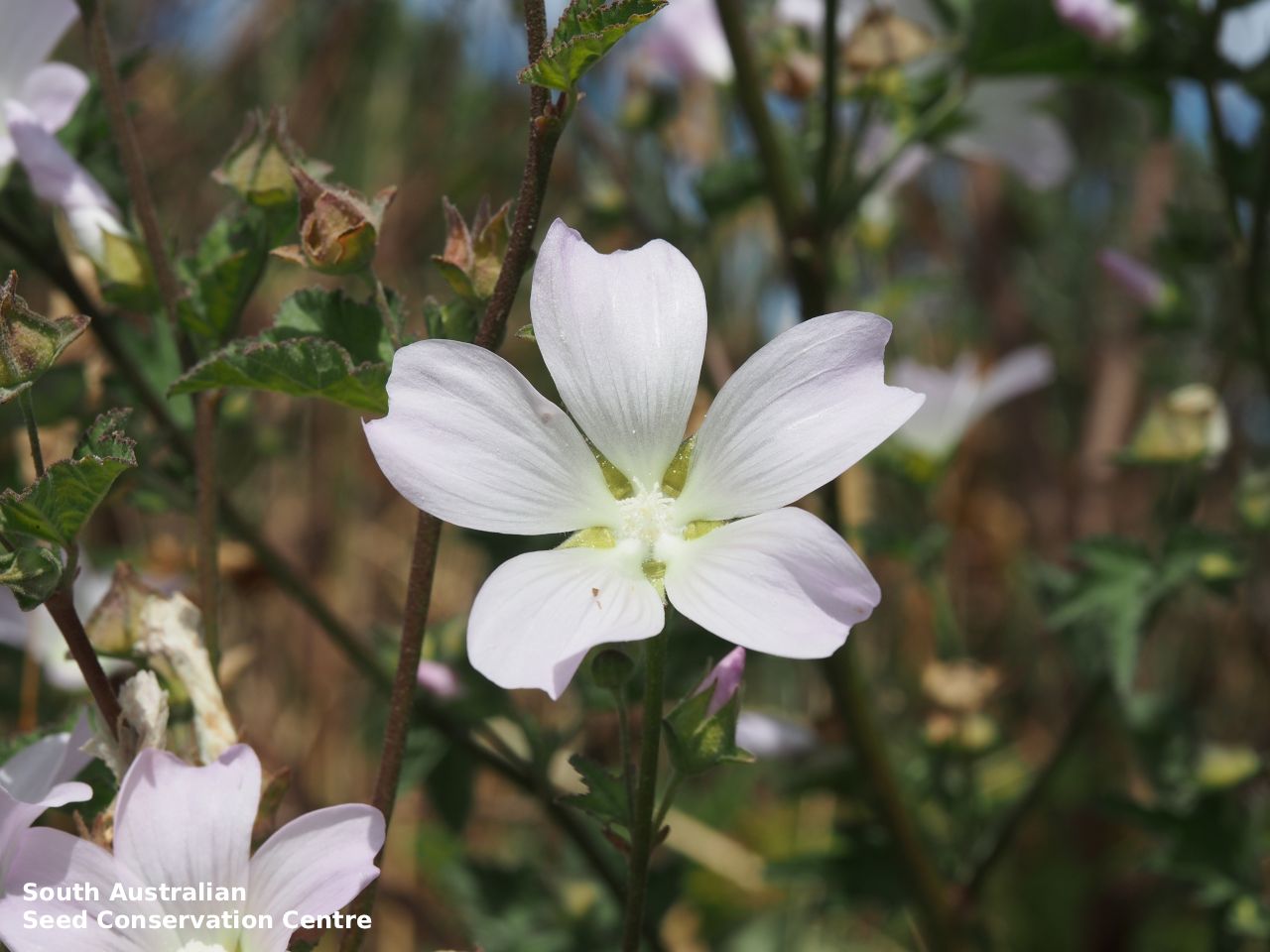
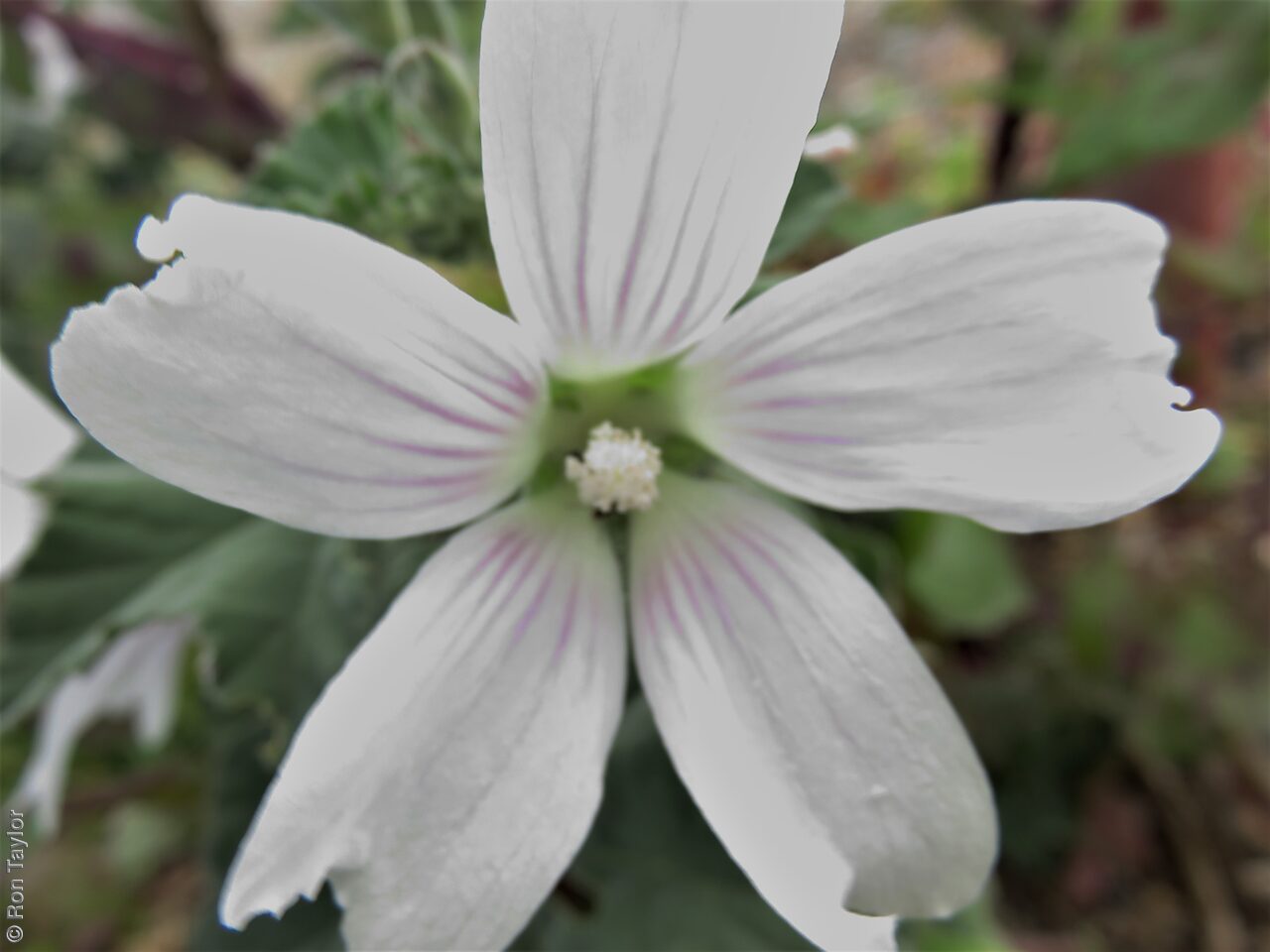
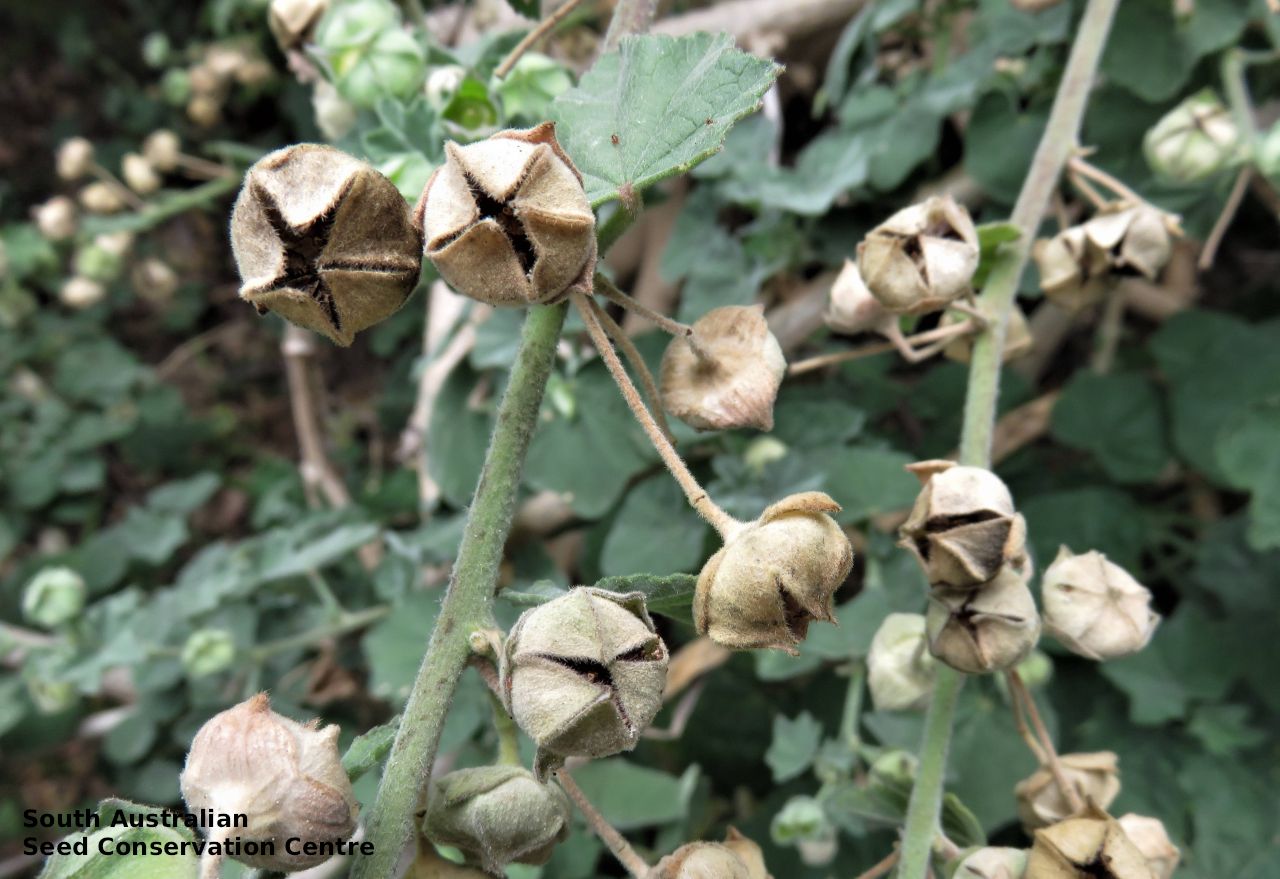
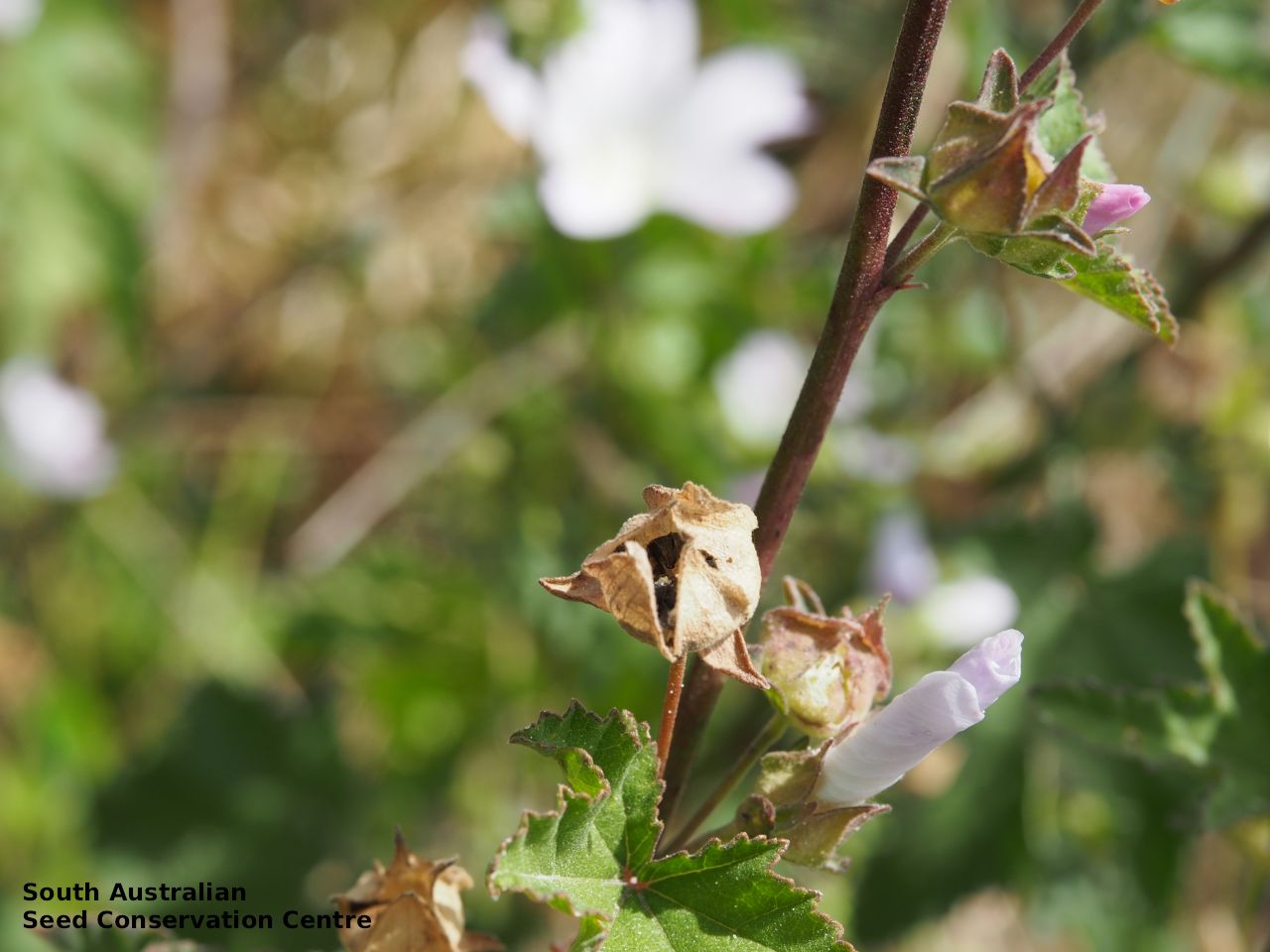
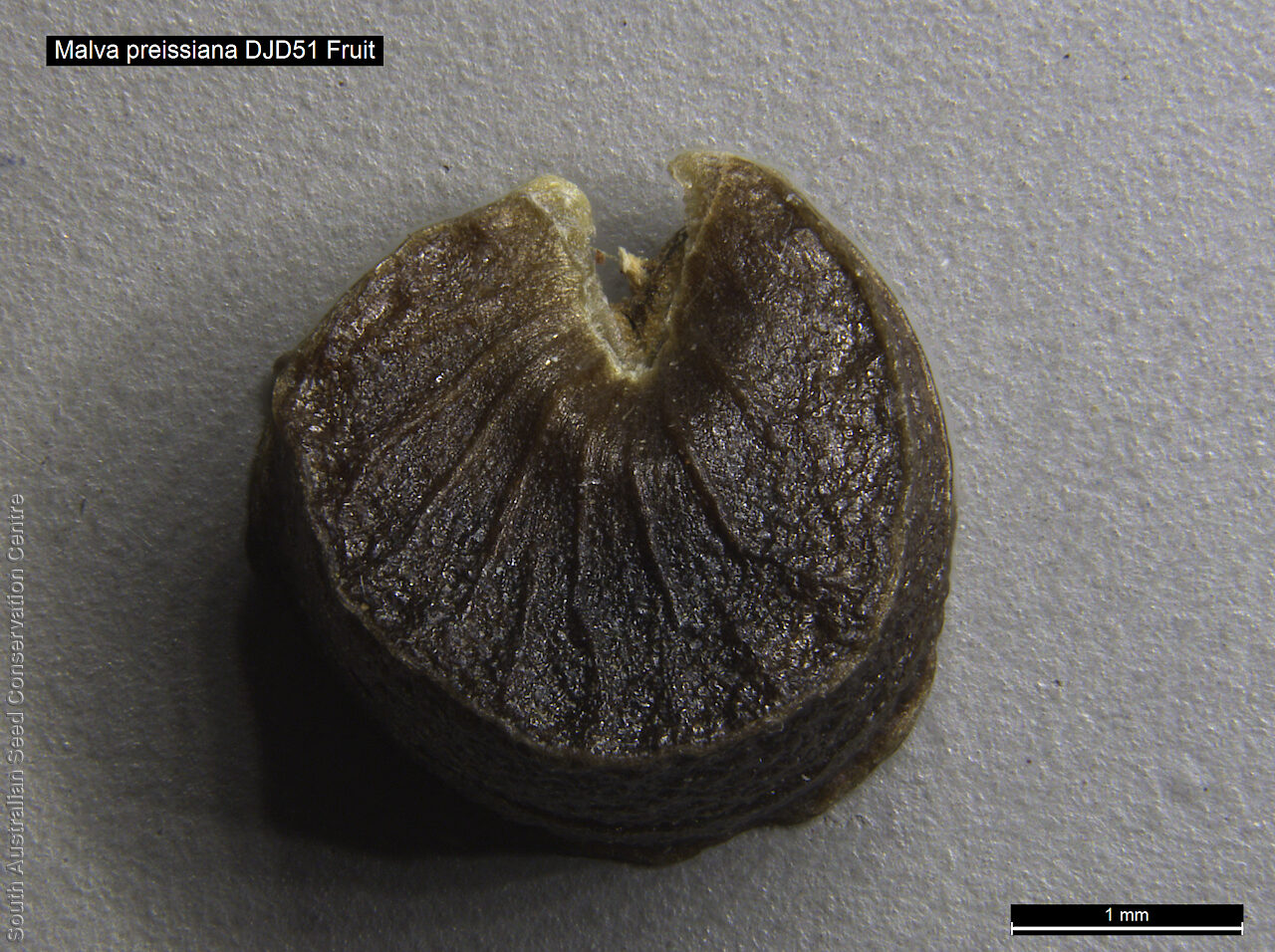
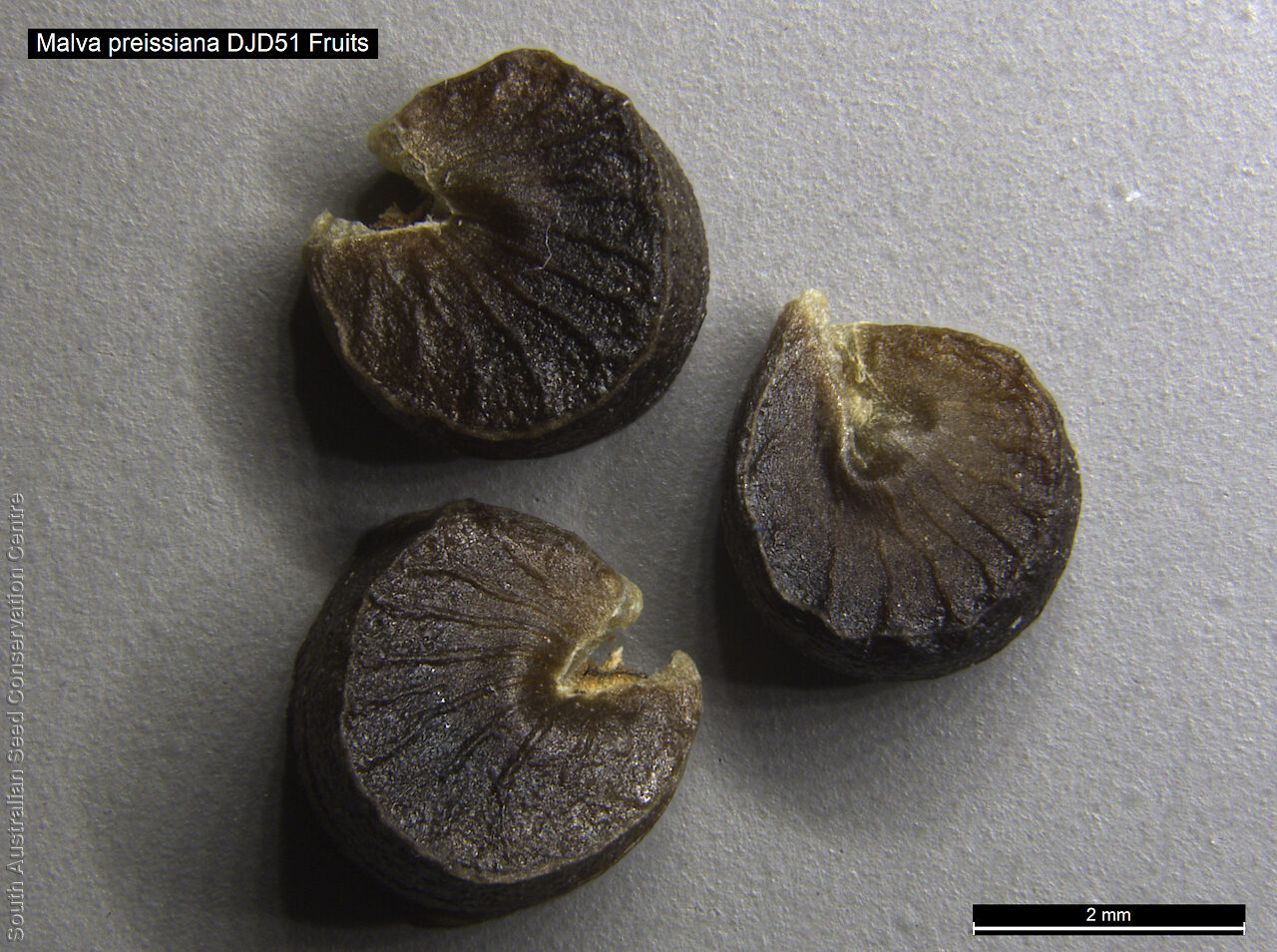
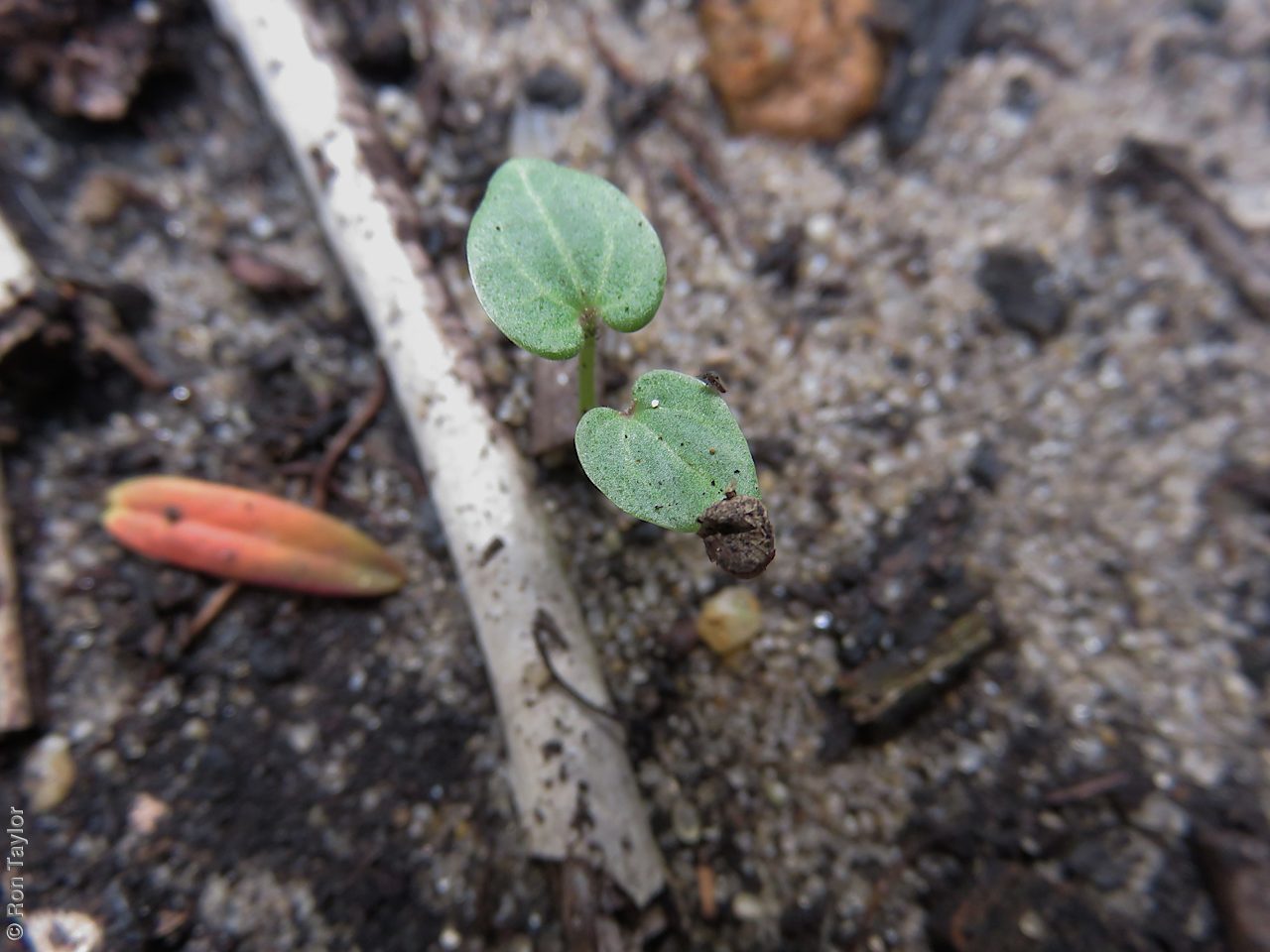
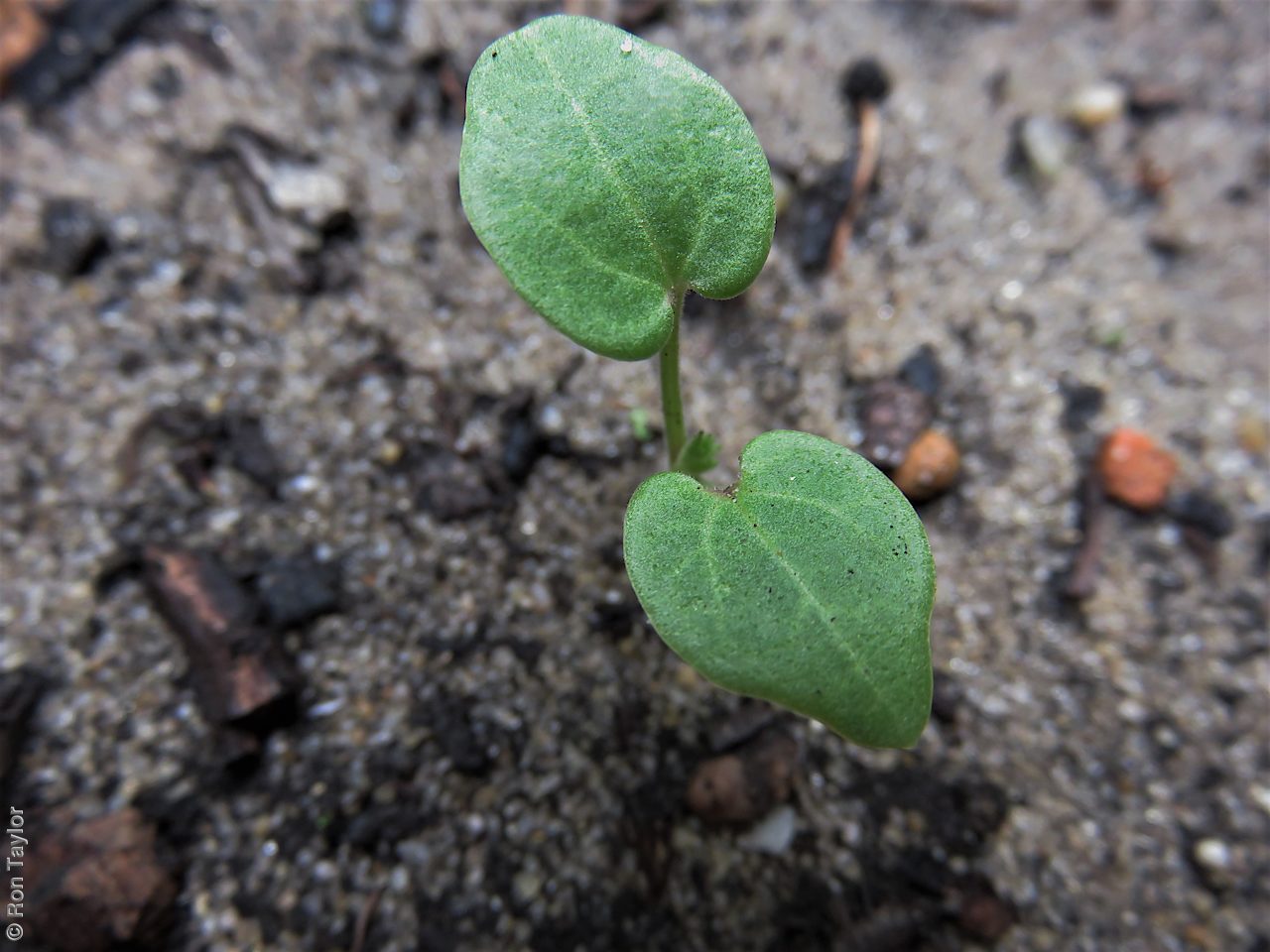

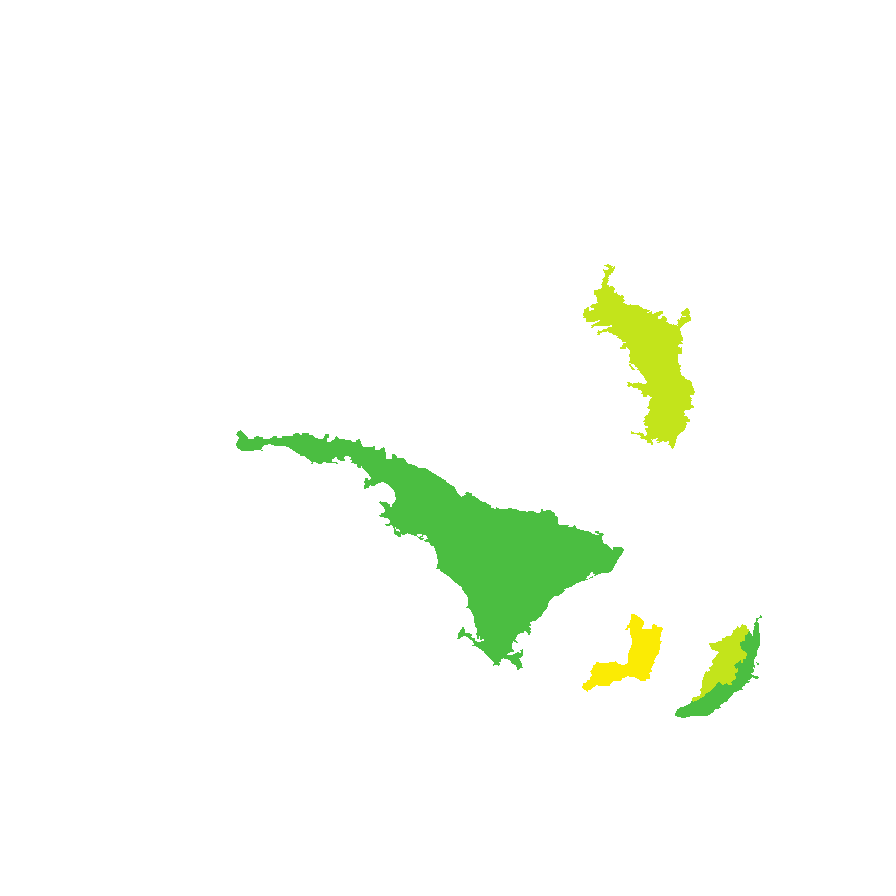
Prior names
Malva behriana, partly
Lavatera australis, nom.nud.
Lavatera behriana, partly
Lavatera plebeja var. tomentosa, partly
Lavatera plebeia var. eremaea, as to Franklin Islands collectio
Lavatera plebeja, orth.var., partly
Lavatera plebeia, partly
Common names
Coastal Austral Hollyhock
Australian Hollyhock
Native Hollyhock
Etymology
Malva a Latin name for mallow, which may have come from the Greek 'malache' or 'malakos' meaning mallow. Preissiana named after Johann August Ludwig Preiss (1811-1883), a German naturalist and plant collector in Western Australia.
Distribution and status
Found in the southern part of South Australia, growing primarily on near-shore islands of the southern coast or more rarely from mainland shores or inland salt lakes associated with seabirds. Collections from the vicinity of Lake Eyre may be due to the area being a major seabird rookery at times of inundation and the saline, guano-enriched rookery soils provide a suitable habitat for seeds carried by coastal seabirds. Also found in Western Australia, Victoria and Tasmania. Native. Common in South Australia. Rare in Victoria. Common in the other states.
Herbarium regions: Lake Eyre, Eyre Peninsula, Yorke Peninsula, Southern Lofty, Green Adelaide
NRM regions: Adelaide and Mount Lofty Ranges, Eyre Peninsula, Northern and Yorke, South Australian Arid Lands
AVH map: SA distribution map (external link)
Plant description
Erect, usually short-lived perennial to 2 m high with densely hairy multiple stems arising at the base. Leaves subentire to palmately with 5�9-lobed, the mid-lobe usually longer than others, to 9 cm long and 11 cm wide, broadly cordate at base, grey-green to dark green, usually paler beneath, sparsely to densely hairy, both surfaces equally hairy. Epicalyx not exceeding the calyx. Flowers white (greenish base) with no stripe or faintly mauve-striped. This species differ from the closely associated species, Malva weinmaniana, principally in flower colour and relative density of hairs on the upper and lower leaf surfaces, with M. weinmanniana having lilac/pink flowers with pink-striped and less hairy on the upper leave surface than the under surface. Malva preissiana and M. weinmanniana can be distinguished from the hybrid, Malva arborea � M. preissiana, which have epicalyx and calyx lobes of similar length, whereas the epicalyx lobes of the native taxa are shorter than those of the calyx. Flowering between August and January. Fruits are hairy pale brown capsule to 14 mm diameter with 12�15 seed segments. Seeds are dark brown to black wedge-shaped seed to 3 mm long and 2 mm wide. Seed embryo type is folded.
Seed collection and propagation
Collect seeds between November and May. Collect mature capsules, those that are turning pale straw colour and contain dark hard seeds. Place the capsules in a tray and leave to dry for two weeks. Then rub the capsules gently with a rubber bung or by hand to dislodge the seeds. Use a sieve to separate the unwanted material. Store the seeds with a desiccant such as dried silica beads or dry rice, in an air tight container in a cool and dry place. From two collections, the seed viability was high, ranging from 80% to 85%. This species has physical dormancy that needs to be overcome for the seed to germinate (e.g. nicking or softening the seed coat).
| Location | No. of seeds (weight grams) | Number of plants | Date collected | Collection number Collection location | Date stored | % Viability | Storage temperature |
|---|---|---|---|---|---|---|---|
| BGA MSB | 10,900 (65.5 g) 10,900 (65.5 g) | 50 | 26-Nov-2004 | DJD51 Northern Lofty | 28-Mar-2006 | 85% | -18°C |
| BGA | 8,300 (33.06 g) | 50 | 8-May-2007 | RJB71567 Lake Eyre | 19-Sep-2008 | 80% | -18°C |
Number of plants: This is the number of plants from which the seeds were collected.
Collection location: The Herbarium of South Australia's region name.
% Viability: Percentage of filled healthy seeds determined by a cut test or x-ray.